Vision and Reality
...............................................
Stephen Willats
For more than one copy or to order multiple titles please email your order and we will calculate the postage cost.
Email Uniformbooks
ISBN 978 1 910010 08 2
288pp, 234 x 142
paperback with flaps
2016, £18.00
...............................................
Reviews and articles
“This is a rich, thought-provoking book, perhaps unique in both its specificity and breadth.”
Municipal Dreams
“I'd really recommend reading this book if you’re into the social history or art of postwar British council housing.”
John Grindrod, Dirty Modern Scoundrel
“The photographs show a dizzying range of interiors, many of which are probably now coming back into fashion, but the unpretentious framing doesn’t labour the question (we’re a long way from Martin Parr here). The views from the flats, of bushes, trees, towers and car parks are sometimes abstract, sometimes perfectly clear and readable. It’s a fascinating, page-turning book.”
Owen Hatherley, ‘Utility or Ideology?’, Review 31
“…a rare and essential book which records, respects and, above all, gives necessary context to people’s accounts of their own lives.”
Lynsey Hanley, ‘Estates of the Nation’ The Times Literary Supplement, 7 October 2016
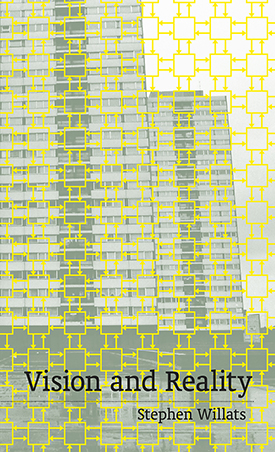
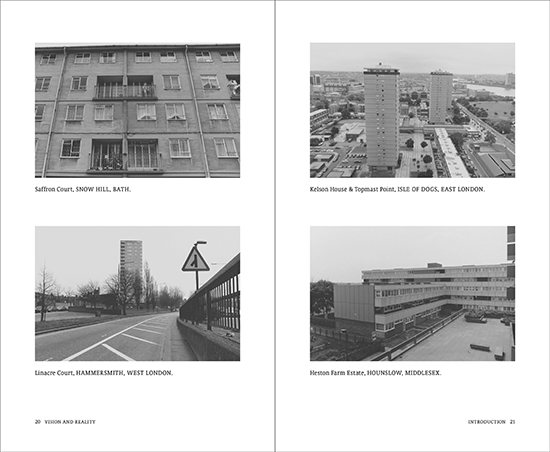
“All art is a product of society, of relationships between people in which it is quite clear that the most important element in the network between the artist and society is the audience. For without two people there can be no work of art.”
This book presents a wide selection of interviews and photographs from the collaborations between Willats and residents in the many housing estate projects he makes. The first-hand observations and individual opinions, from the past four decades, record a variety of attitudes and perceptions towards the physical reality of their surroundings. Created outside of the norms and conventions of an object-based art world, the projects in this book, mainly on estates in and around London, but also in Bath, Leeds, Milton Keynes and Oxford, highlight the realities of everyday life in both tower blocks and low-rise planned housing. Willats’ work, based on open agreement, transforms peoples’ perceptions of a deterministic culture of objects and monuments, into the possibilities, and rich complexity, inherent in the community between people.
Over 500 black and white photographs.
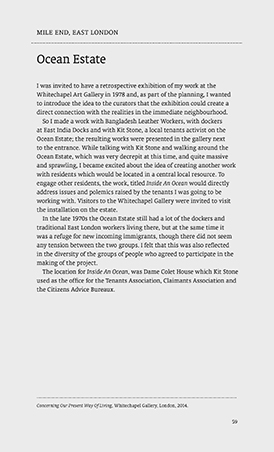
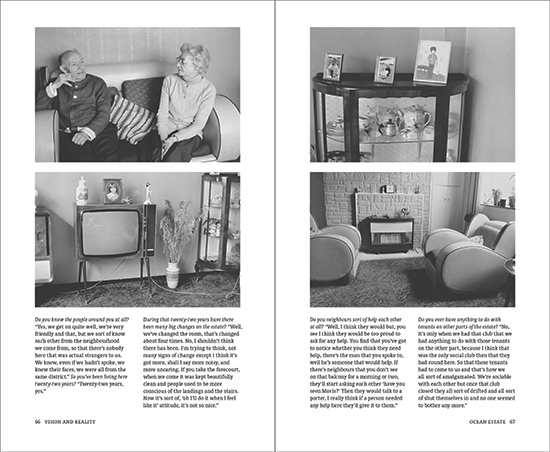
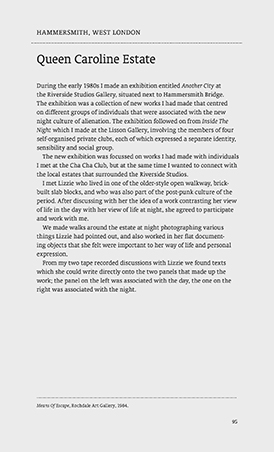
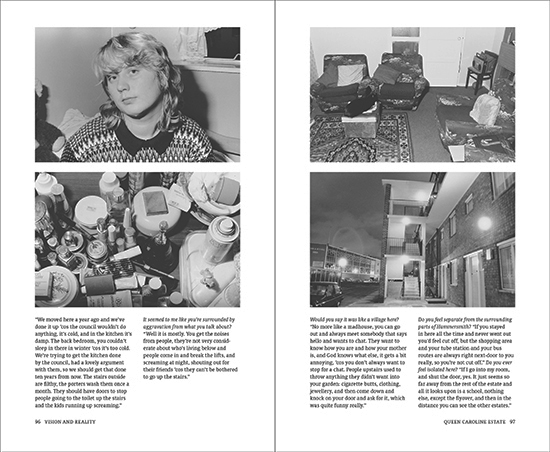
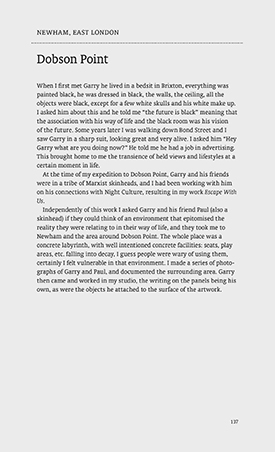
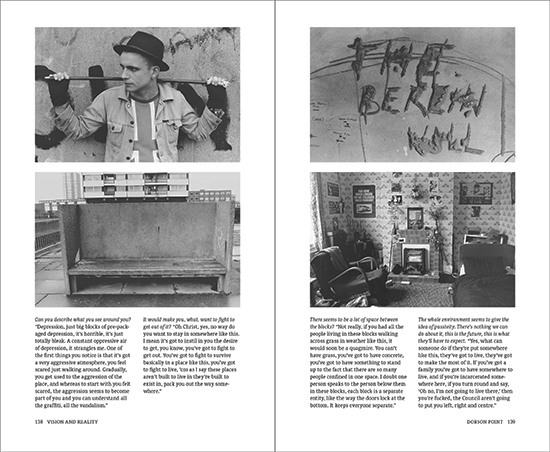
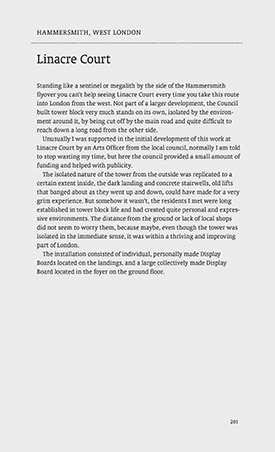
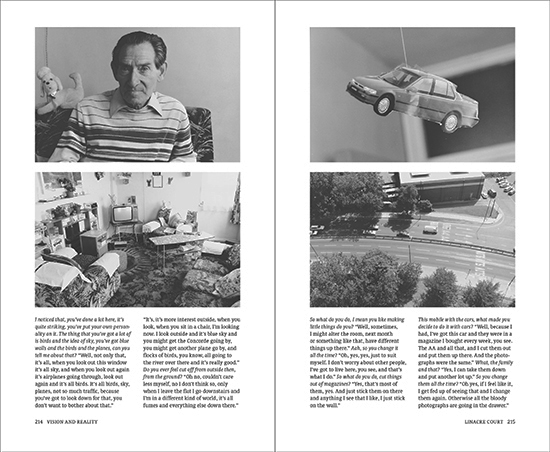
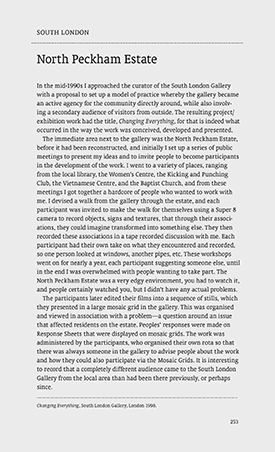
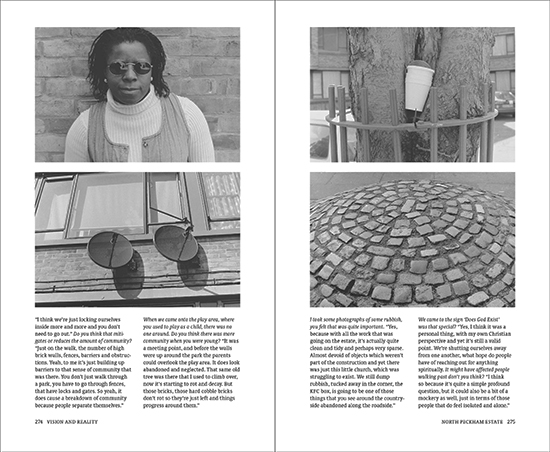
Skeffington Court, Hayes, Middlesex; Friars Wharf Estate, Oxford; Ocean Estate, Mile End, East London; Brandon Estate, Walworth, South London; Charville Lane Estate, Hayes, Middlesex; Avondale Estate, Hayes, Middlesex; Queen Caroline Estate, Hammersmith, West London; Tottenham Hale Estate, North London; Brentford Towers, Hounslow, Middlesex; Sandridge Court, Finsbury Park, North London; Dobson Point, Newham, East London; Farrell House, Whitechapel, East London; Marlborough Towers, Leeds; Lovell Park Towers, Leeds; Homecourt, Feltham, Middlesex; Warwick Estate, Paddington, West London; Saffron Court, Snow Hill, Bath; Linacre Court, Hammersmith, West London; Kelson House & Topmast Point, Isle of Dogs, East London; Heston Farm Estate, Hounslow, Middlesex; North Peckham Estate, South London; Coffee Hall Estate, Milton Keynes.
“Willats does not claim to have invented a new code for urban living in his encounter with the private and public lives of his subjects. But what he can claim, quite legitimately, is to have supplied them with a new form of narrative articulation, which borrows resourcefully from the repertoire of the social scientist but depends nonetheless on a radical possibility which exists in the image as such.”
Stephen Bann, Stephen Willats: Conceptual Living
...
Stephen Willats was born in London in 1943. Internationally recognised as a groundbreaking practice, his work includes a diverse range of disciplines from cybernetics and communications theory to computer technology and he is one of the first artists to take work out of galleries and into the world outside, pioneering socially interactive and community engaged art. Besides being known for his interactive artworks involving people living in a wide variety of urban contexts he exhibits widely throughout Europe and in North and South America—recent exhibitions have taken place in New York, Mexico City, Berlin and London. As well as his many exhibitions, Willats has continually used books and publications as a key element in his practice.
